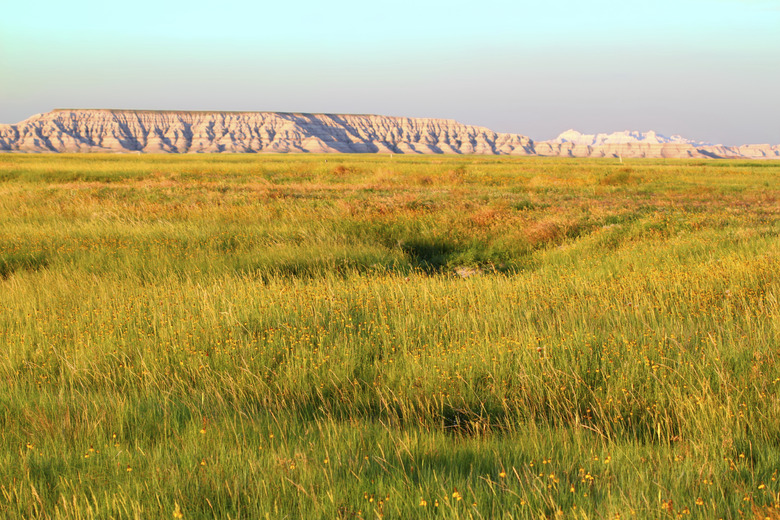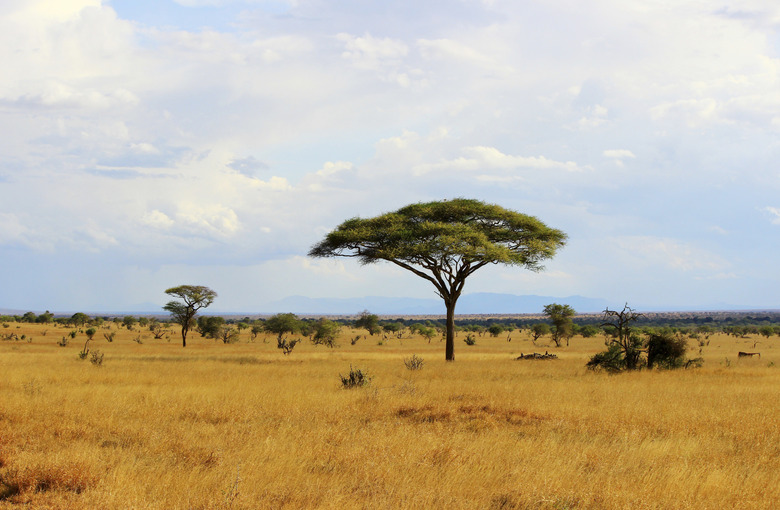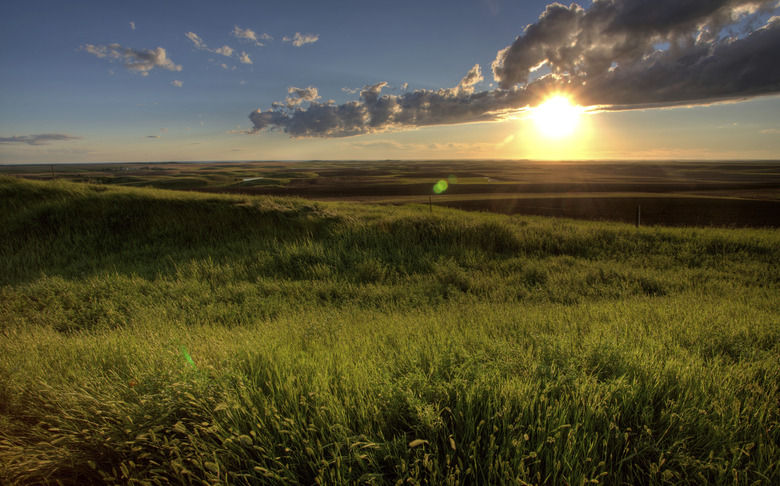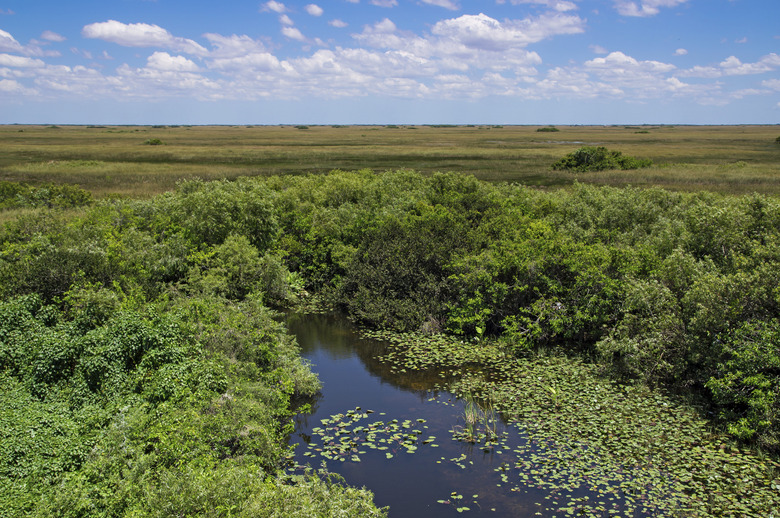Characteristics Of Grassland Biomes
Grassland biomes are ecosystems in which the predominant vegetation type consists of various grasses rather than trees or large shrubs. A grassland ecosystem may be divided into several types, including savannas, temperate grasslands, tallgrass prairies, steppes, alpine tundra, and flooded grasslands, among others.
The type of grassland that occurs in a particular region is based on the latitude, terrain, local climate, precipitation, and wildfire regime. The faunal communities and grassland plants supported by these different types of grasslands vary on the basis of characteristics of the grasslands themselves, as well as by geographic location.
Characteristics of Savannas
Characteristics of Savannas
Although some definitions of savannas indicate they are tropical grasslands, savannas can actually be tropical, temperate, montane, or flooded grasslands. Savannas are characterized by grasslands with scattered individual trees and a few large scattered shrubs. Savannas rely on specific climatic regimes for their creation and maintenance, including warm temperatures and distinct wet and dry seasons.
The animals that thrive on a savanna depend largely on the region of the world in which the savanna is located; a savanna may support zebras, giraffes, kangaroos, rodents, insects, large predatory cats, elephants, buffalo, and a variety of other animals.
Types of Savannas
Types of Savannas
Climatic savannas are maintained by the occurrence of wildfires during the dry season—otherwise they would be taken over by later successional non grassland plants such as shrubs and trees. Typically, the soils of savannas are thin and porous, and savannas whose development and composition are more a result of soil type than wildfire regime are called edaphic savannas. Human land management practices, such as farming and ranching, that result in deforestation and subsequent regrowth of grasses on abandoned farmland are called derived savannas.
Temperate Grassland Characteristics
Temperate Grassland Characteristics
Temperate grasslands lack the scattered trees that are characteristic of savannas. Temperate grasslands have distinct hot and cold seasons and a moderate amount of precipitation in the late spring and early summer. Taller grasses dominate in the temperate grasslands that receive more rainfall, whereas shorter grasses can be found in drier regions.
Temperate grasslands have deeper, richer soils than savannas and support a different suite of animal species, including gazelles, zebras, rhinoceroses, horses, lions, wolves, deer, jackrabbits, foxes, skunks and prairie dogs. The specific grassland plants and animal compositions of temperate grasslands are driven by their geographic location, local climatic regime, and soil type.
Types of Temperate Grasslands
Types of Temperate Grasslands
Prairies with medium and tall grasses are one type of temperate grassland ecosystem. Drier areas with little precipitation support the growth of buffalo grass, cacti, sagebrush and blue grama grass; these types of grasslands are called steppes. Steppes support badgers, predatory birds, and snakes but usually lack ungulates and large predators.
Other Grassland Characteristics and Types
Other Grassland Characteristics and Types
Flooded, montane, tundra, and desert grasslands are additional distinct grassland biomes. Flooded grasslands or flooded savannas are wetland habitats dominated by grasses, for example, the Florida Everglades. Montane or alpine grasslands may be tropical, subtropical or temperate and occur in cool temperatures at high elevations, such as the steppes of the Tibetan plateaus.
The highest-elevation montane grasslands are called the alpine tundra. Grasslands that grow in deserts, which are defined as regions receiving less than 50 centimeters of rain per year, are known as desert grasslands.
Cite This Article
MLA
Reid, Ari. "Characteristics Of Grassland Biomes" sciencing.com, https://www.sciencing.com/characteristics-grassland-biomes-5109756/. 13 May 2019.
APA
Reid, Ari. (2019, May 13). Characteristics Of Grassland Biomes. sciencing.com. Retrieved from https://www.sciencing.com/characteristics-grassland-biomes-5109756/
Chicago
Reid, Ari. Characteristics Of Grassland Biomes last modified March 24, 2022. https://www.sciencing.com/characteristics-grassland-biomes-5109756/



